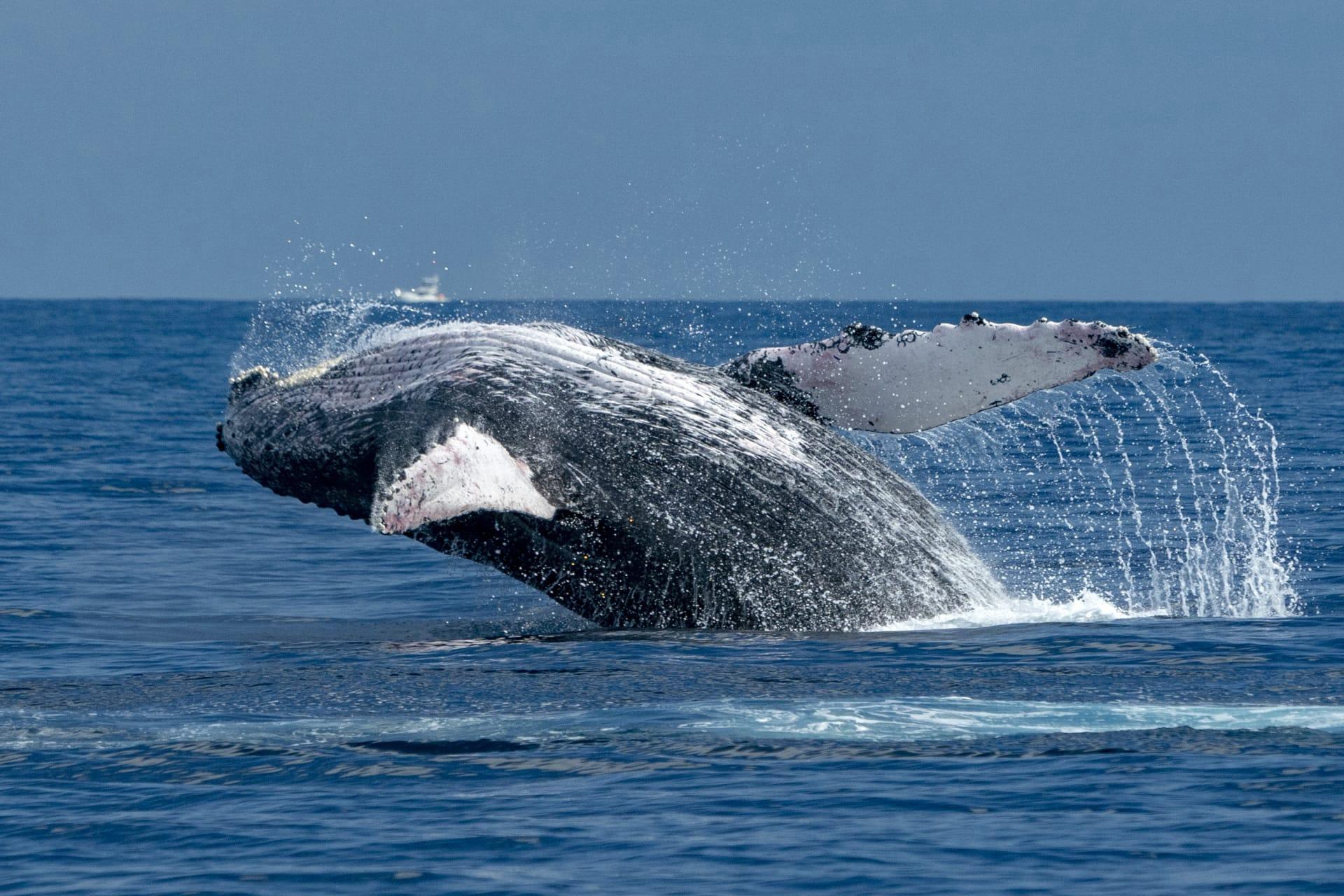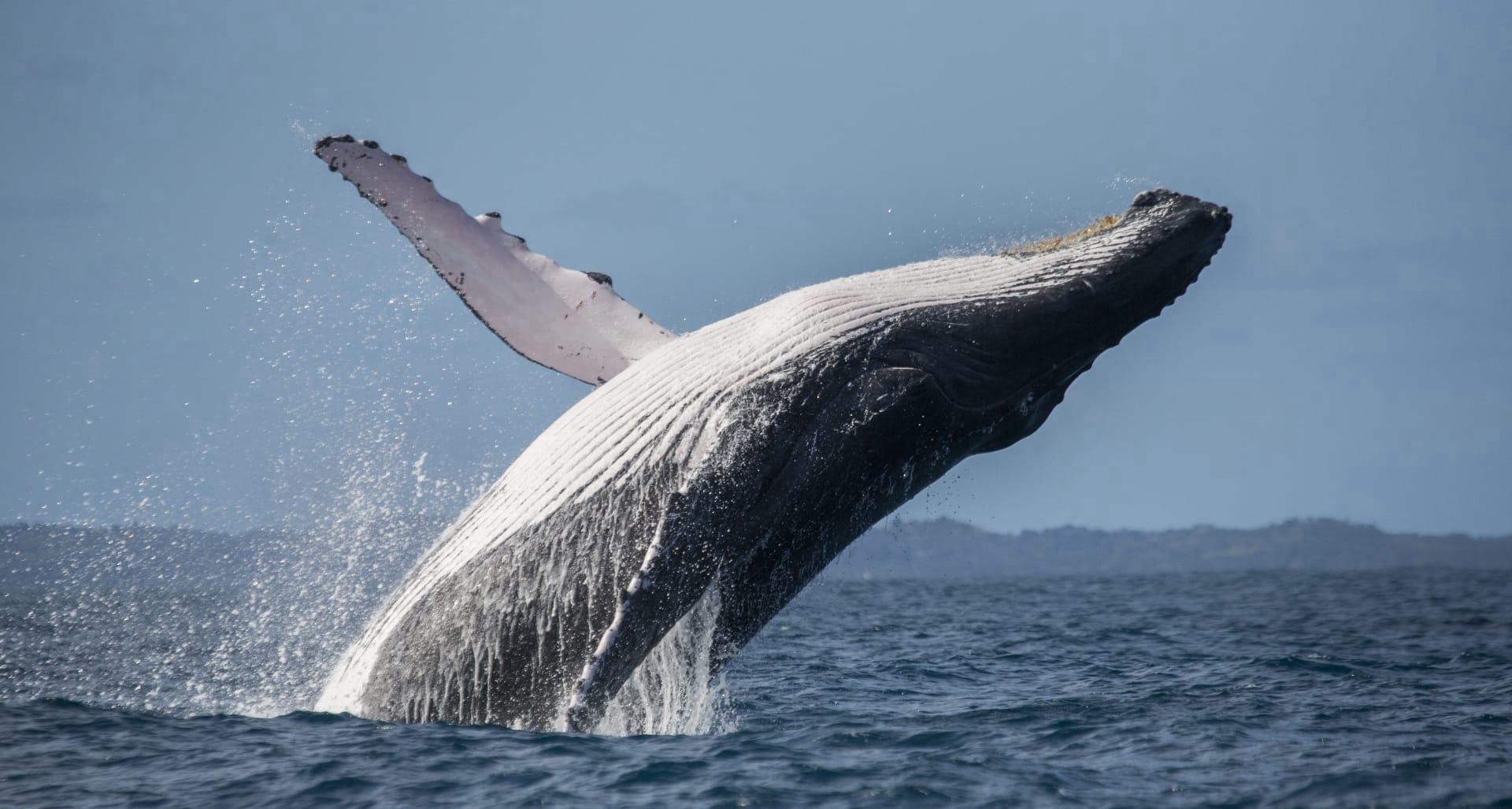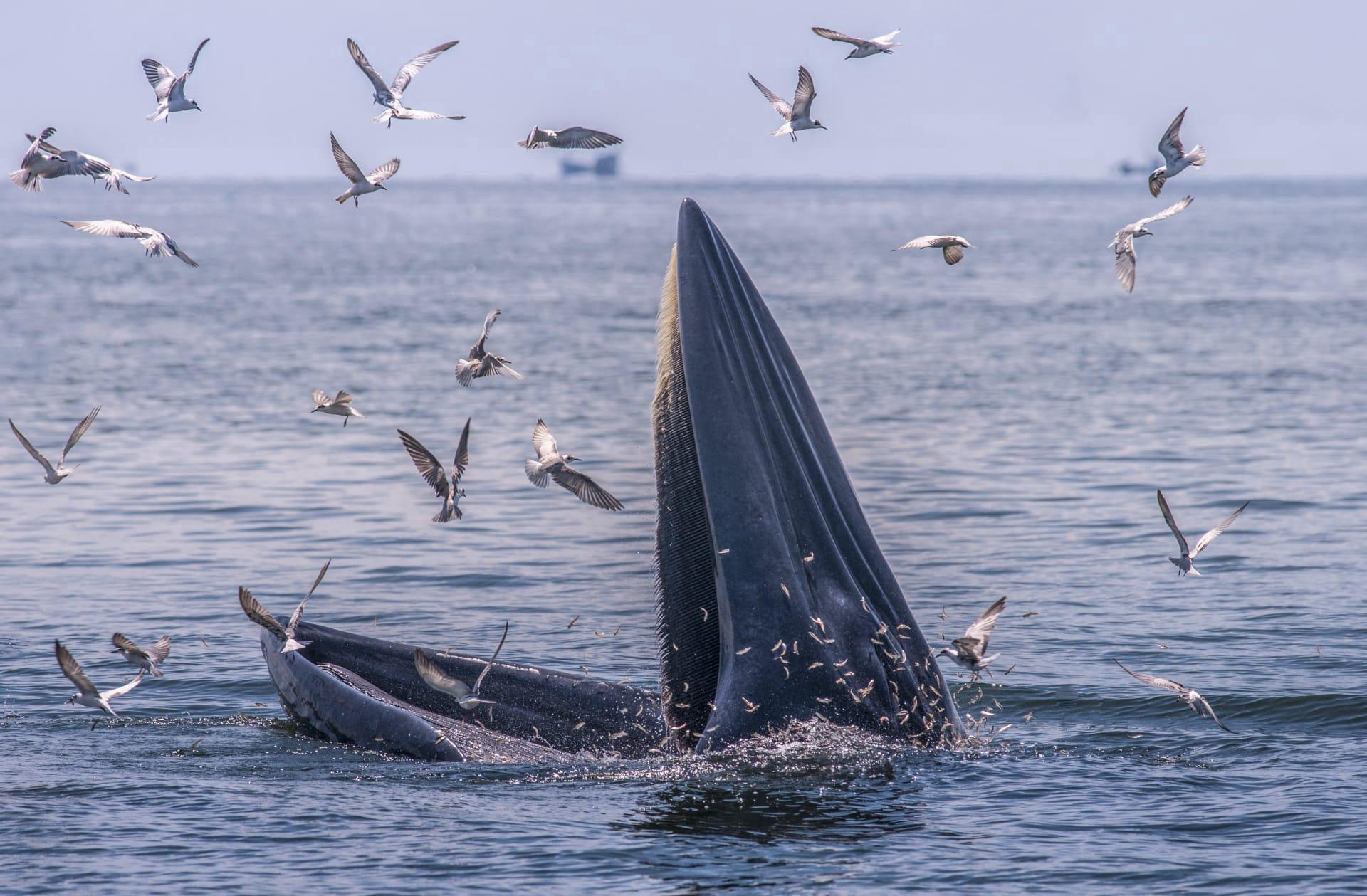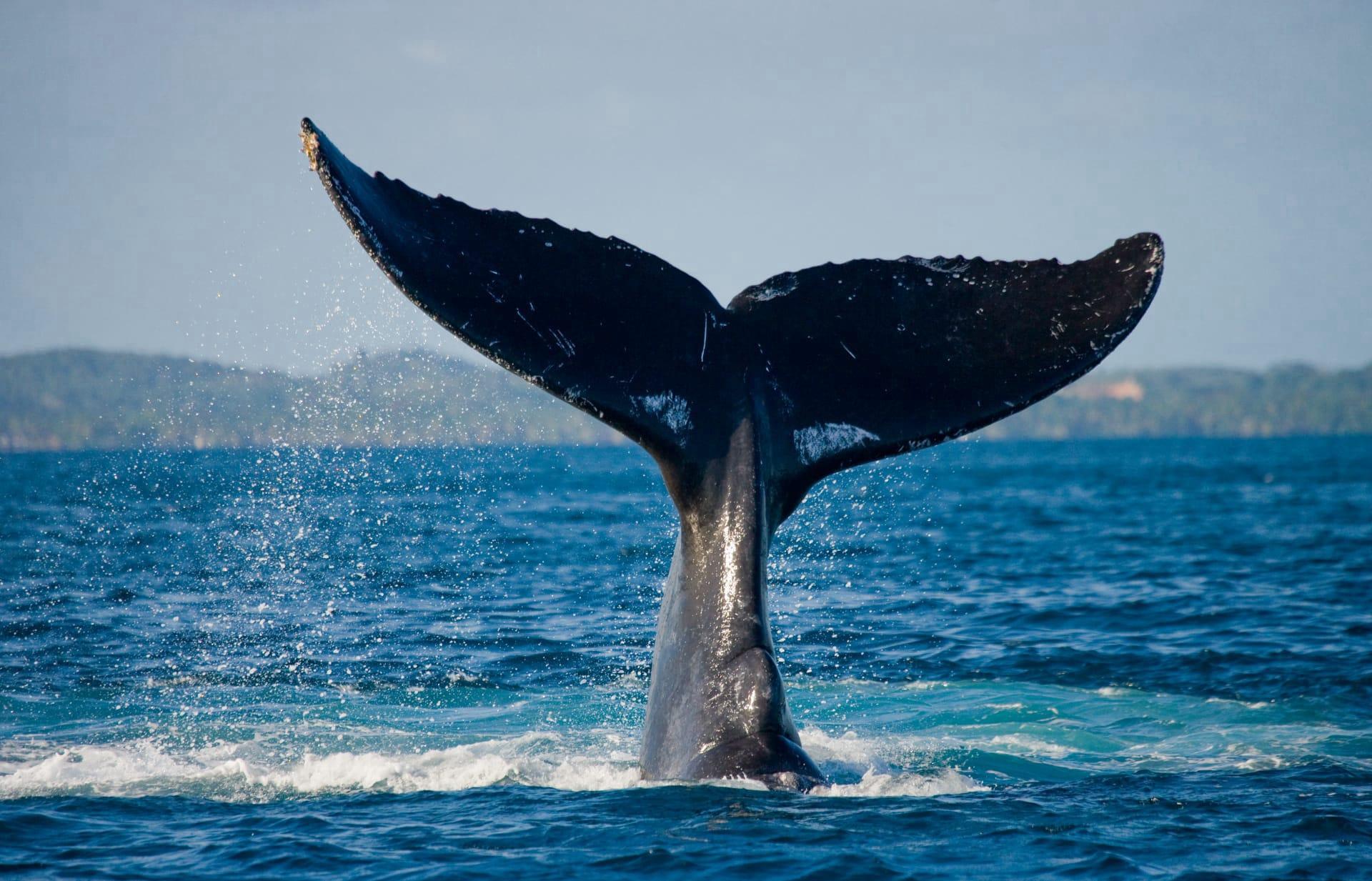Whale Characteristics
- Home /
- Mini Encyclopedia /
- Animal /
- Whale Characteristics
1
Whales, the gentle giants of the ocean, are fascinating creatures known for their massive size and long lifespan. The blue whale, for instance, is the largest animal on the planet, measuring up to 100 feet in length and weighing as much as 200 tons. On average, whales live for about 70 to 90 years, with some species like the bowhead whale living over 200 years! They have streamlined bodies for efficient swimming and can dive to depths of 1,000 meters or more. Despite their massive size, whales are warm-blooded mammals, breathing air through their lungs, and they maintain a thick layer of blubber for insulation in the cold ocean waters.
The most distinctive organ in a whale is its blowhole, located on top of its head. This is essentially their nostril, but it's far from just a simple nose. Whales have evolved this specialized organ to breathe efficiently at the ocean's surface. When a whale surfaces, it expels air and water vapor through the blowhole at high speeds, creating the characteristic 'spout.' This adaptation allows them to take quick breaths without fully leaving the water, an essential trait for an animal that spends most of its life submerged. The blowhole is surrounded by muscles that can seal it off, preventing water from entering their respiratory system during deep dives.

2
Question: Do whales sleep and if so, how?
Answer: Yes, whales do sleep, but their sleep is quite different from human sleep. Since they're conscious breathers, they can't go into a deep, unconscious sleep like we do. Instead, they shut down only half of their brain at a time, a behavior known as unihemispheric slow-wave sleep. This allows one side of their brain to rest while the other side remains alert, enabling them to continue breathing and to watch out for predators and obstacles. They often sleep near the surface to access air easily, and they may either float motionless or swim slowly during this resting state. A whale's sleep is usually short and intermittent, adding up to a few hours each day.

3
Whales are known for their impressive swimming abilities. Despite their massive size, many species are quite agile and can reach speeds of up to 20 miles per hour. Their tail fins, called flukes, move up and down to propel them through the water, unlike fish, which swim by moving their tails left and right. This motion is powered by strong muscles along their back. Whales also have pectoral fins for steering and stopping. Some species, like humpback whales, are known for breaching - a spectacular display where they leap out of the water, which is believed to be a form of communication or a way to dislodge parasites.
In terms of feeding, whales exhibit diverse hunting strategies. The blue whale, for example, feeds primarily on tiny shrimp-like animals called krill. They engage in a behavior known as lunge feeding, where they engulf large volumes of krill-filled water and then filter out the water, retaining the krill. Toothed whales, like orcas, hunt larger prey such as fish and seals. They often use complex hunting strategies, like herding fish into tight balls or creating waves to wash seals off ice floes. This demonstrates not only their physical prowess but also their intelligence and social coordination during hunting.

4
The habitat of whales varies widely across species, encompassing almost all the world's oceans. They are found in Arctic and Antarctic waters, tropical seas, and everything in between. Some species, like the gray whale, migrate vast distances, traveling thousands of miles between feeding and breeding grounds. This migration is one of the longest of any mammal, with some whales crossing entire oceans.
Whale reproduction involves unique behaviors and characteristics. Most species have a gestation period of 11 to 16 months, after which a single calf is born. Newborn whales, called calves, are born tail-first to prevent drowning and can swim almost immediately. They are nursed by their mothers for 6 to 24 months, depending on the species. During this time, calves consume large quantities of milk, which is very rich in fat, to promote rapid growth. Whale songs, particularly in species like the humpback whale, are thought to play a role in mating behavior, although their exact purpose is still a topic of research.

5
Book: "The Whale: In Search of the Giants of the Sea" by Philip Hoare. This engaging book, a mix of personal narrative, history, and scientific exploration, delves into the world of whales. Published in the United States in 2010, Hoare's work is a journey that spans from the author's personal fascination with whales to a broader exploration of their biology, the whaling industry, and their representation in art and literature. The book is celebrated for its eloquent prose and the way it interweaves various aspects of whale lore and science.
Book: "Whales, Dolphins, and Porpoises: A Natural History and Species Guide" by Annalisa Berta. Published in 2015, this comprehensive guide offers an in-depth look at the cetacean family, which includes whales, dolphins, and porpoises. Berta, a renowned marine mammalogist, presents detailed profiles of various species, accompanied by beautiful illustrations. The book stands out for its combination of scientific rigor and accessibility, making it a valuable resource for both marine biologists and general readers interested in these fascinating marine mammals.